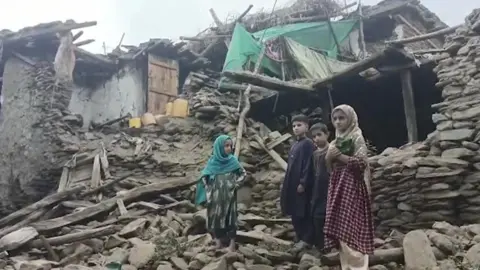A 6.0 magnitude earthquake has struck Afghanistan's mountainous eastern region, with authorities estimating hundreds of casualties and significant damage.
The quake occurred at 23:47 local time on Sunday, with its epicenter located 27km from Jalalabad in Nangarhar province. The shallow depth of just 8km led to it being felt widely, including in Kabul and parts of neighboring Pakistan.
Initial assessments suggest hundreds may have died, with the Taliban's interior ministry reporting over 600 feared dead, though confirming the exact toll remains a challenge. Aid from international organizations is being sought, as the area faces difficulties in accessing the worst-hit regions due to landslides and damaged roads.
Afghanistan's landscape poses considerable challenges for rescue efforts, compounded by infrastructure damage from prior flash flooding that affected the area just days before the quake. The Taliban, now in control of the country, has suffered a reduction in international support and humanitarian aid since their takeover in August 2021.
The earthquake highlights Afghanistan's vulnerability to seismic events, with its location on critical fault lines making such disasters common. Building practices do not typically allow for earthquake-resistant structures, making many homes—often made from mud brick and wood—highly susceptible to collapse during such events.
Despite the restrictions on foreign reporters and aid agencies, there is no ban on international humanitarian assistance. As the death toll is expected to rise, the nation grapples with an already strained healthcare system and severe economic difficulties.
Authorities continue to face significant obstacles as they navigate through the aftermath of this devastating earthquake, seeking to provide immediate relief to those in need.





















